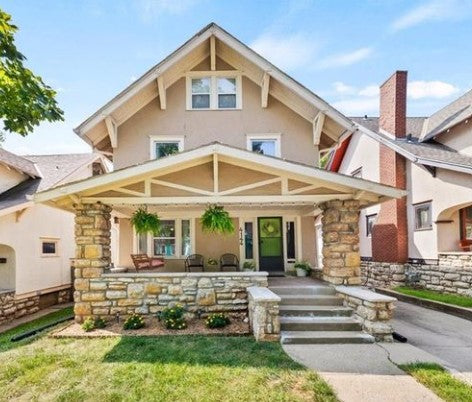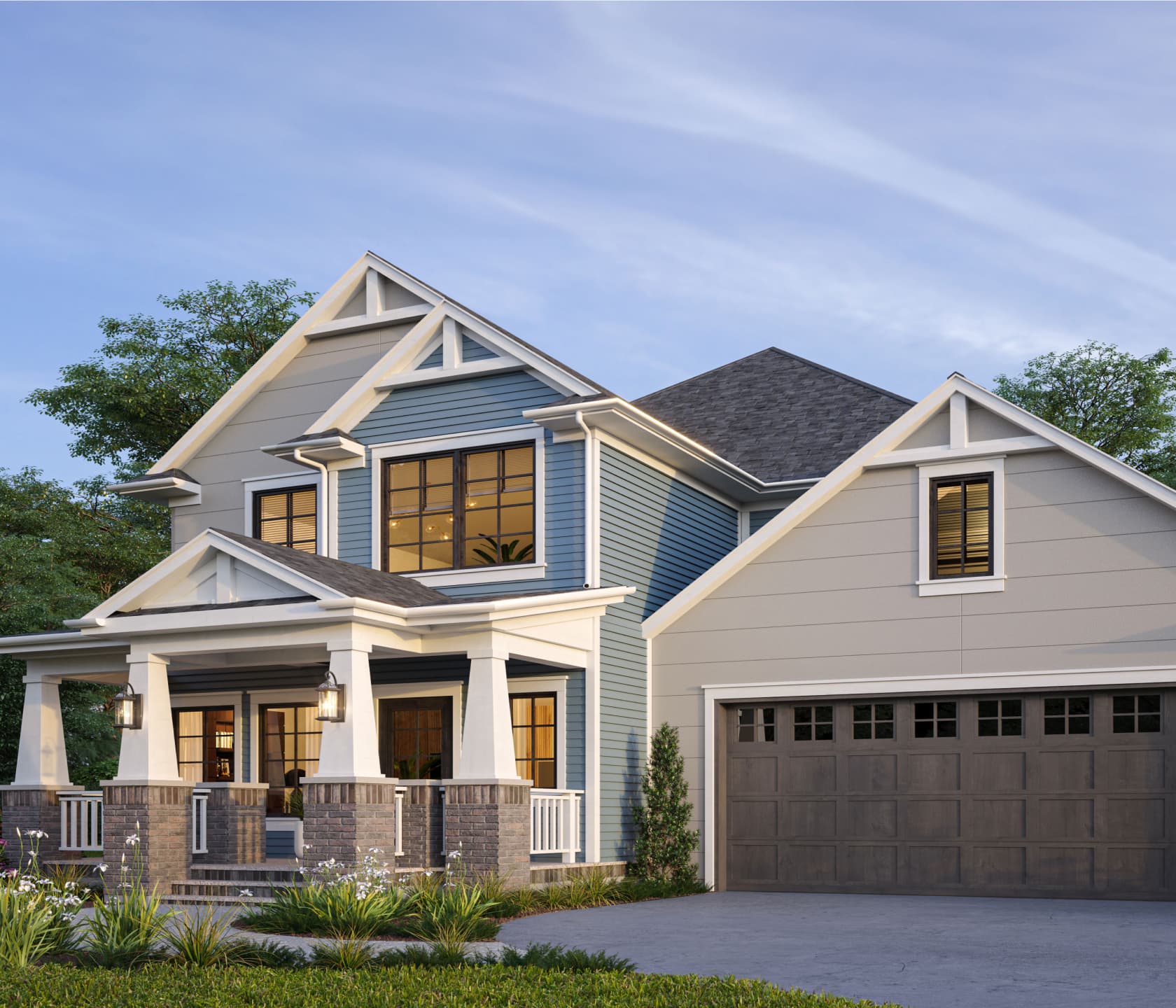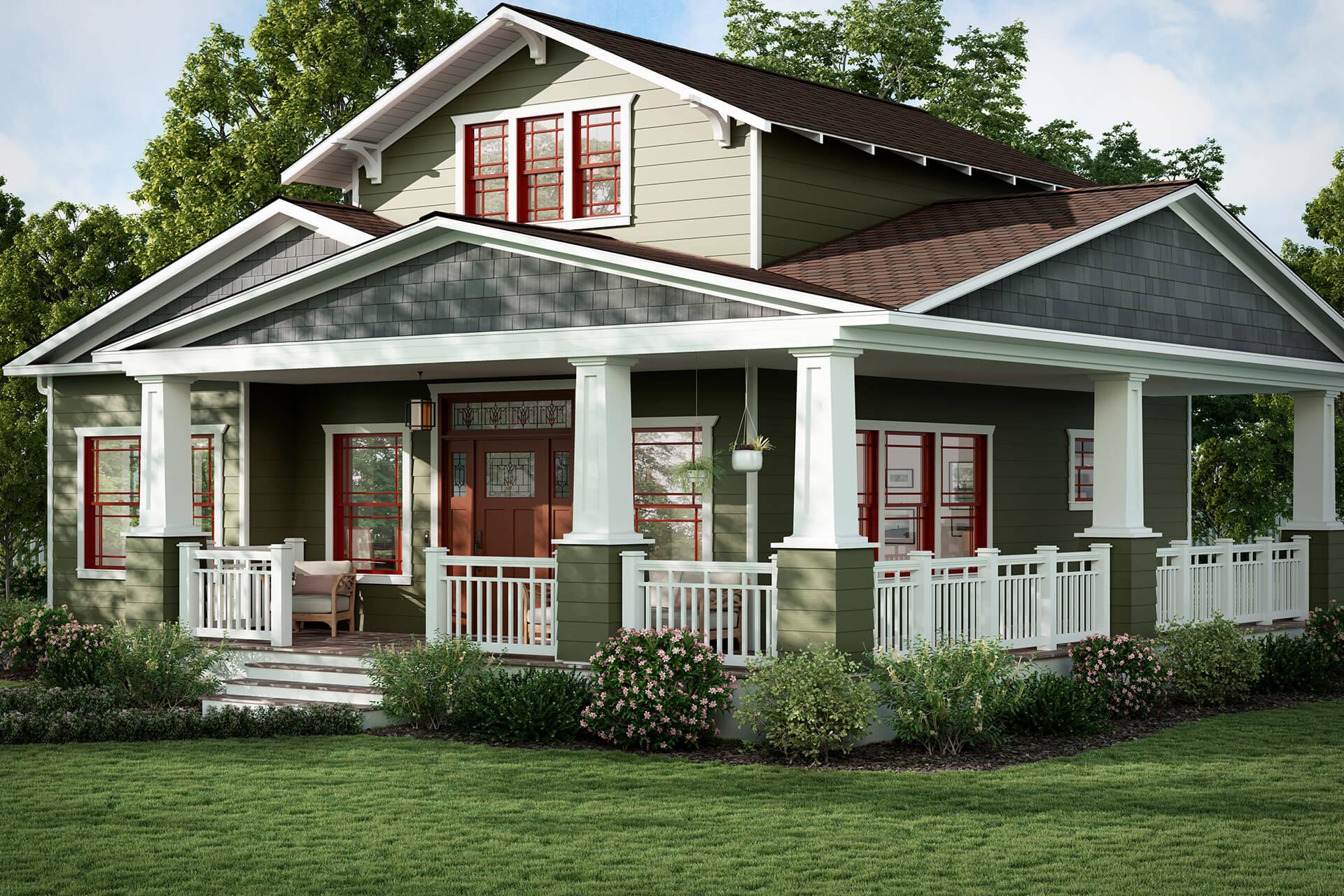Beautiful craftsman style house Project Showcases
Wiki Article
The Function of Arts & & Crafts Architects in Elevating Architectural Solutions in Residential Style
Arts and Crafts architects greatly affect residential layout through their commitment to craftsmanship and sustainability. They prioritize handcrafted details and natural products, which boost both looks and community identification. By including customers in the style process, these architects create one-of-a-kind space that reverberate with individual preferences. This method questions regarding the future trajectory of domestic architecture and its possible influence on community characteristics. craftsman style house. What exists in advance for this ageless design philosophy?
The Concepts of Arts and Crafts Architecture
The essence of Arts and Crafts architecture exists in its commitment to craftsmanship and simpleness. This architectural motion arised in the late 19th century as a response to automation, stressing the value of handcrafted information and all-natural materials. The principles of Arts and Crafts architecture focus on performance and harmony with the environment. Structures typically include low-pitched roofs, vast eaves, and revealed rafters, promoting a feeling of unity with nature.Artisans played a considerable duty in this design, often integrating attractive components like stained glass, floor tiles, and woodwork, which reflect local workmanship. The color combination tends to be natural and controlled, enabling buildings to blend effortlessly right into their surroundings. Additionally, the style encourages open flooring plans and public spaces, cultivating a sense of togetherness. In general, the concepts of Arts and Crafts architecture celebrate the beauty of simpleness and the value of human link to both nature and area.

Lasting Practices in Residential Layout
While the demand for ecologically accountable living proceeds to grow, sustainable practices in residential style have acquired considerable traction among architects and home owners alike. Architects are progressively integrating energy-efficient technologies and lasting materials right into their designs, aiming to lower carbon impacts and boost power preservation. Methods such as passive solar style, environment-friendly roofings, and rain harvesting systems are coming to be basic elements of modern-day household architecture.The option of locally sourced products lessens transport exhausts and sustains local economic situations. Emphasis on natural light and air flow not only enhances indoor air quality but likewise minimizes reliance on artificial lights and environment control systems. These sustainable methods mirror a dedication to preserving the atmosphere while supplying homeowners with comfy, effective space. As recognition of ecological issues expands, the integration of sustainability in property design is positioned to come to be a defining quality of contemporary architecture, guided by the principles established by Arts and Crafts architects.
Customization and Personalization in Home Design
Customization and customization in home design have actually become crucial trends in reaction to the growing wish for special living settings that mirror individual tastes and way of livings. Home owners significantly look for to customize spaces that reverberate with their individualities, resulting in a more meaningful link with their home. craftsman style house. This activity motivates architects to involve customers in the layout procedure, fostering partnership that ensures the final result embodies the property owner's visionElements such as bespoke designs, custom materials, and customized surfaces enable a diverse range of expressions in property style. Arts and Crafts architects play a pivotal duty in this advancement, stressing workmanship and high quality. Their emphasis on integrating creative components with capability warranties that each home is not just visually pleasing but likewise distinctly fit to the occupants' demands. Consequently, this focus on personalization improves the overall household experience, developing spaces that are both personal and long-lasting.

The Impact of Arts and Crafts Architects on Neighborhood Looks
As areas progress, the influence of Arts and Crafts architects considerably shapes their visual landscape. By highlighting handcrafted information, natural products, and traditional construction techniques, these architects produce homes that resonate with their surroundings. Their designs typically incorporate regional plants, appearances, and colors, fostering a sense of consistency in between developed settings and nature.The Arts and Crafts motion promotes community identity via architectural continuity. By urging home owners to take on similar design concepts, neighborhoods establish a cohesive character that improves aesthetic appeal. This architectural uniformity not just enriches the aesthetic experience but likewise infuses a sense of satisfaction amongst citizens.
Furthermore, the concentrate on sustainability and workmanship in Arts and Crafts architecture aligns with modern-day worths, making these styles relevant in contemporary settings. Ultimately, Arts and Crafts architects contribute significantly to the overall elegance and cultural stability of communities, leaving a long lasting effect on their aesthetic tradition.

Future Trends in Arts and Crafts Architecture
With an increasing focus on sustainability and personalization, future fads in Arts and Crafts architecture are poised to mix typical craftsmanship with contemporary innovation - craftsman style house. Architects are likely to prioritize environmentally friendly materials, using reclaimed timber and all-natural stone to enhance the sustainability of domestic layouts. The combination of clever home modern technology will certainly see here come to be prevalent, permitting for personalized living experiences without endangering aesthetic honestyIn addition, the resurgence of artisanal techniques will foster a renewed recognition for handcrafted elements, such as bespoke kitchen cabinetry and customized floor tile job. Future designs might additionally show an emphasis on community-oriented rooms, encouraging interaction and connection amongst locals. Outdoor living locations will acquire importance, seamlessly integrating nature right into the home atmosphere. As Arts and Crafts architecture develops, it will remain to honor its origins while adapting to modern needs, producing harmonious spaces that mirror private worths and way of lives.
Often Asked Concerns
What Influenced the Arts and Crafts Movement in Architecture?
The Arts and Crafts movement in architecture was motivated by a reaction versus industrialization, emphasizing handmade top quality, natural products, and a return to traditional craftsmanship, aiming to develop unified, useful areas that celebrated virtuosity and originality.How Do Arts and Crafts Architects Collaborate With Customers?
Arts and crafts architects work together with clients through open discussion, prioritizing individual demands and visual appeals. They emphasize craftsmanship and sustainability, fostering a partnership that incorporates the customer's vision with the designer's experience in look at here now design and materials.What Materials Are Commonly Utilized in Arts and Crafts Homes?
Common materials in Arts and Crafts homes include natural wood, rock, and block, stressing craftsmanship and organic appearances. These aspects produce a warm, inviting environment, showing the motion's commitment to quality and simplicity in design.Just how Do Arts and Crafts Layouts Improve Indoor Living Rooms?
Arts and Crafts designs improve indoor home by promoting all-natural light, open flooring strategies, and handcrafted details. These elements foster a warm, inviting ambience, urging a link between homeowners and their settings with thoughtful, functional visual appeals.What Are Some Famous Examples of Arts and Crafts Architecture?
Famous instances of Arts and Crafts architecture include the Gamble Residence, Greene and Greene's masterpiece in California, and the Robie Home by Frank review Lloyd Wright. These structures showcase handcrafted details and harmony with nature, defining the motion's significance.Report this wiki page